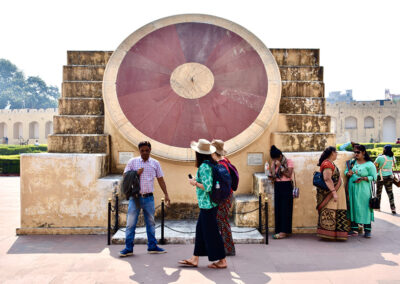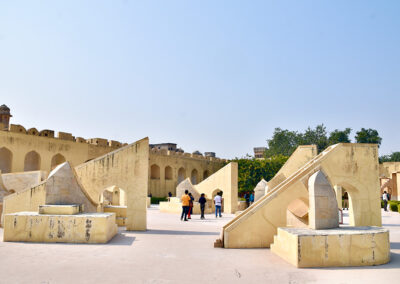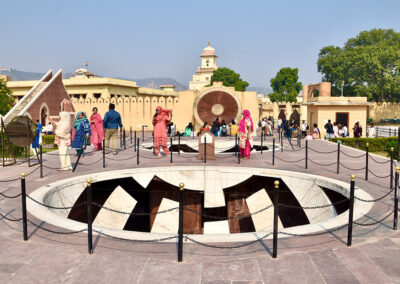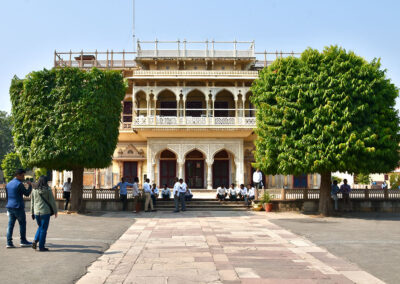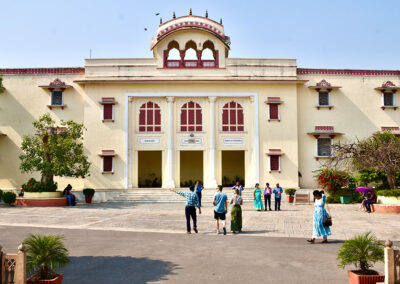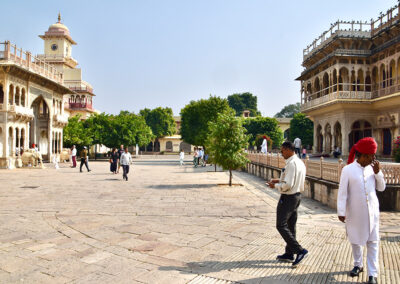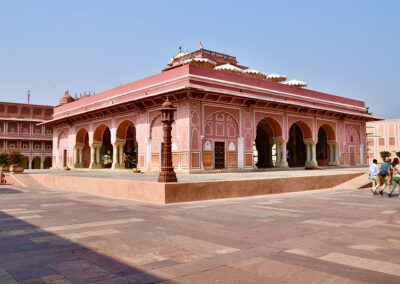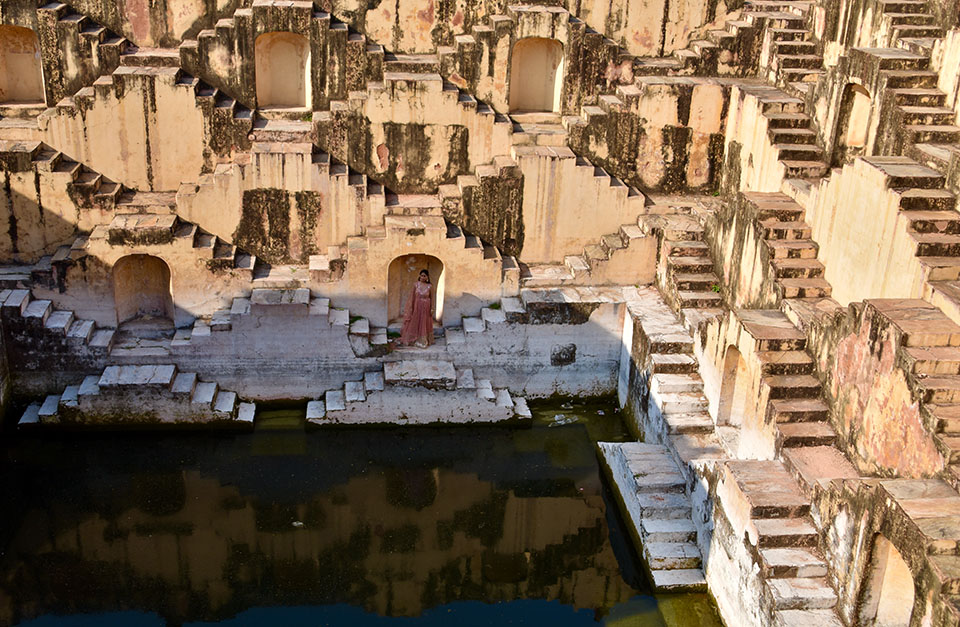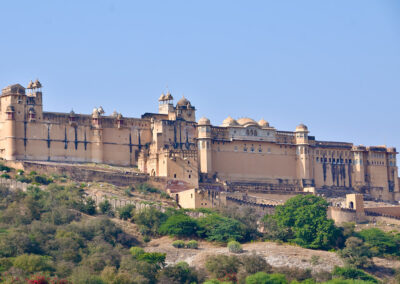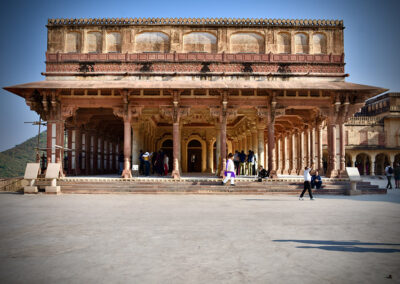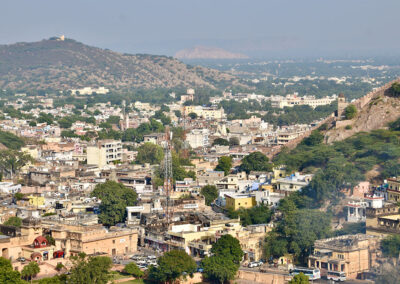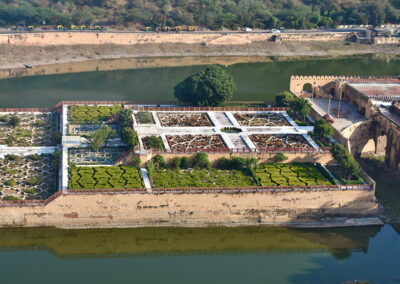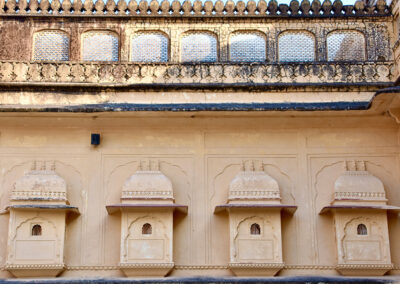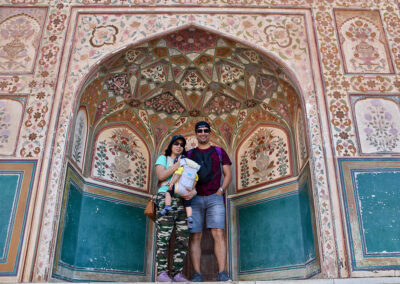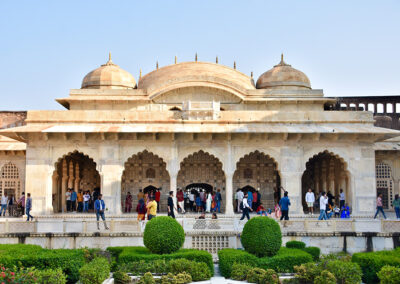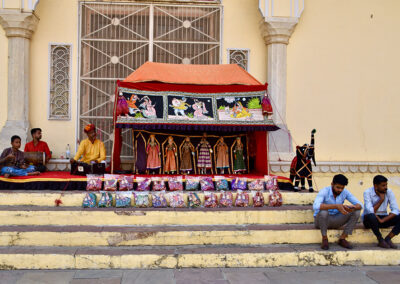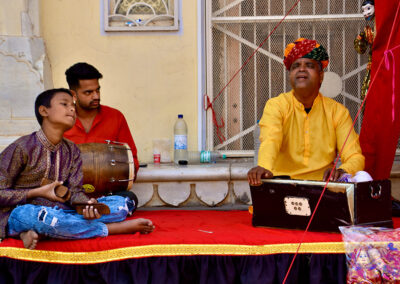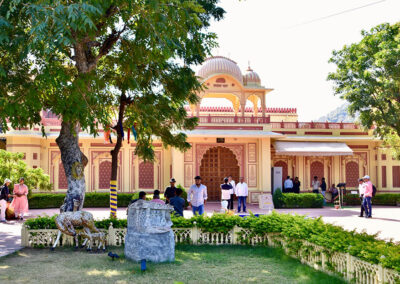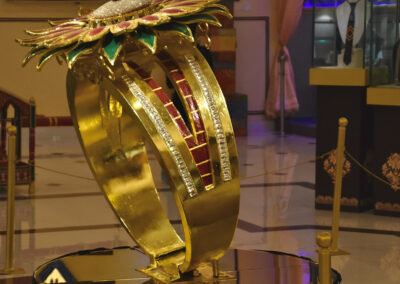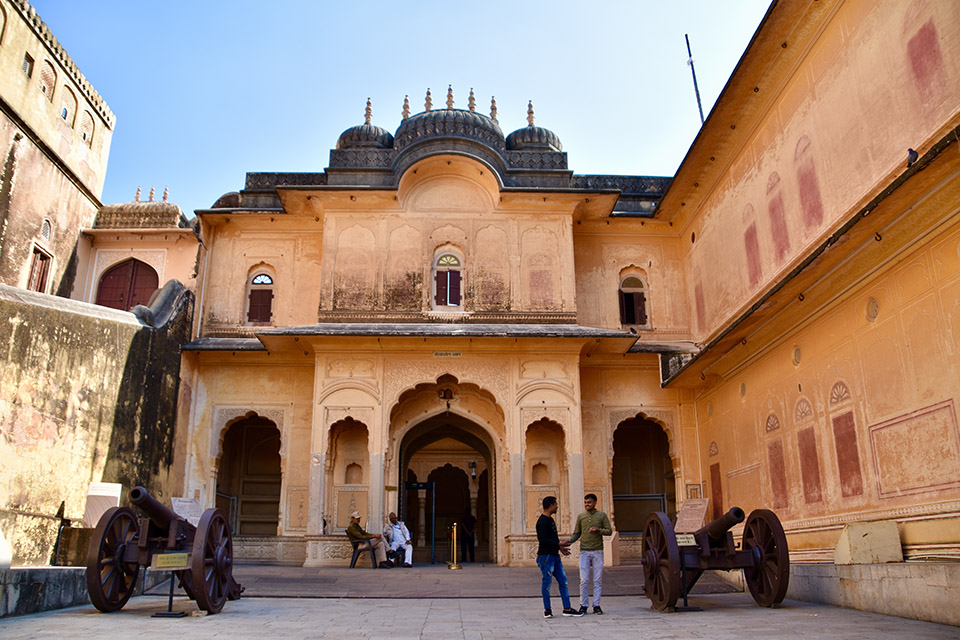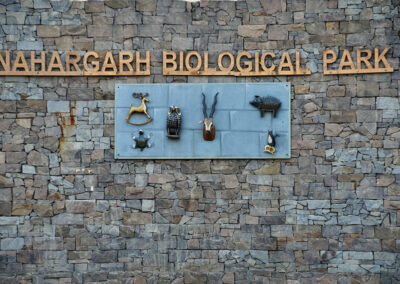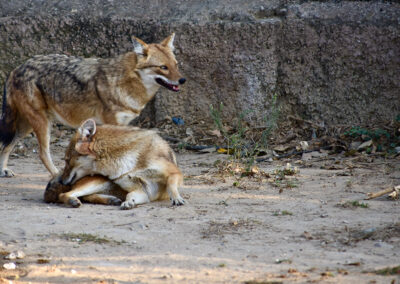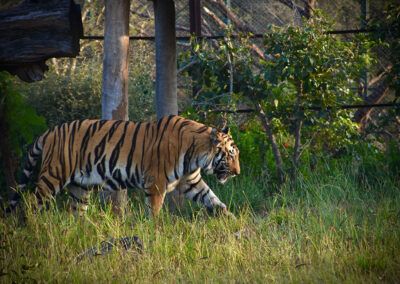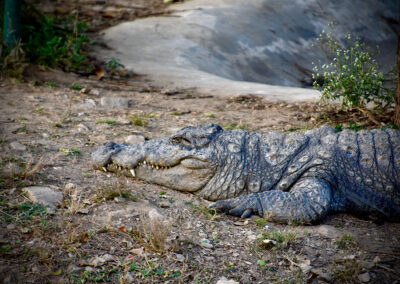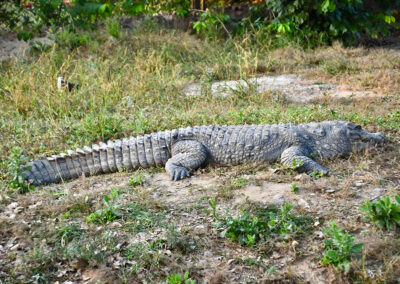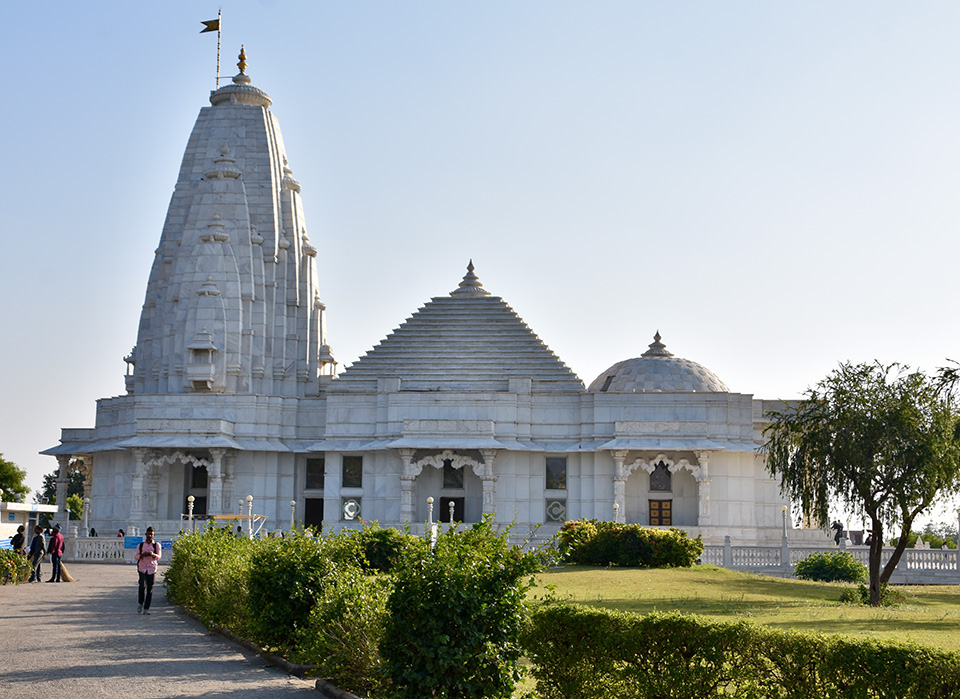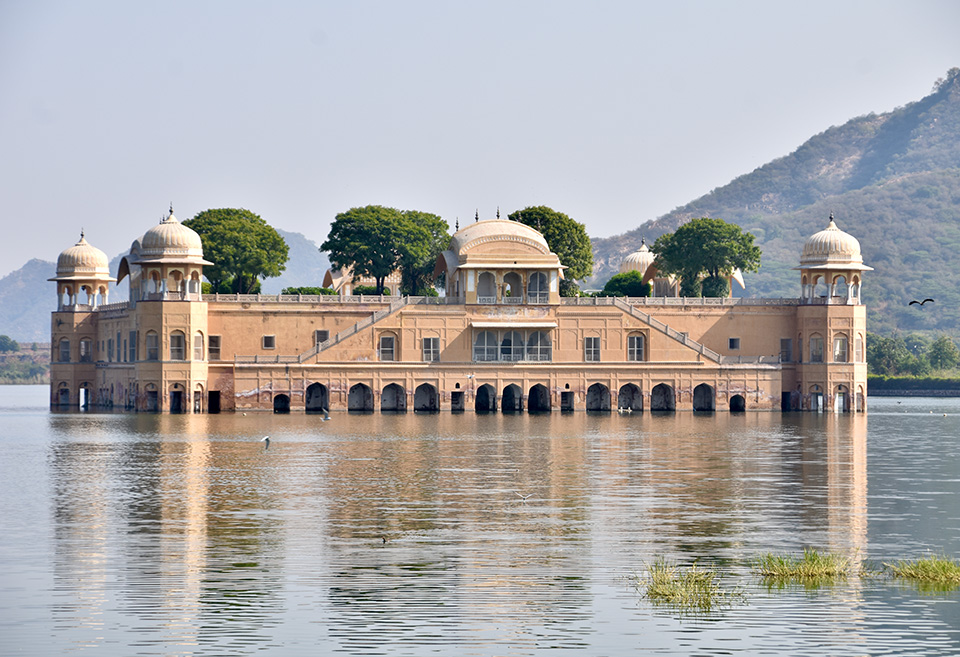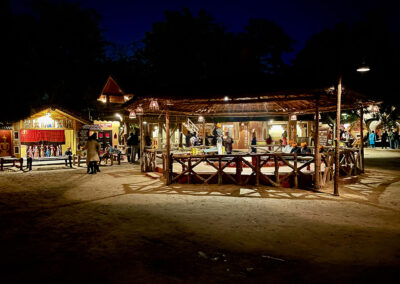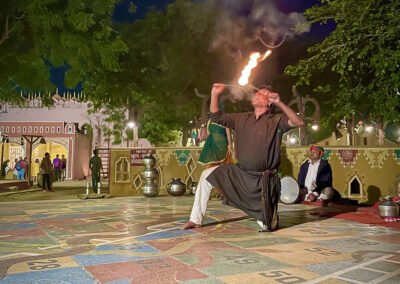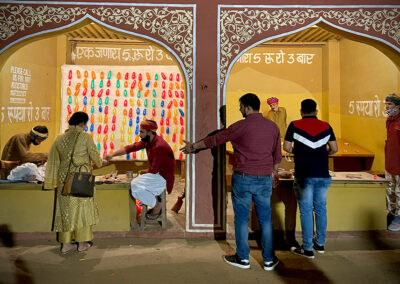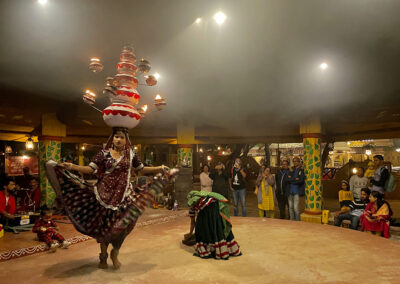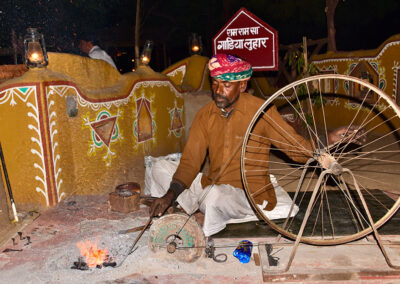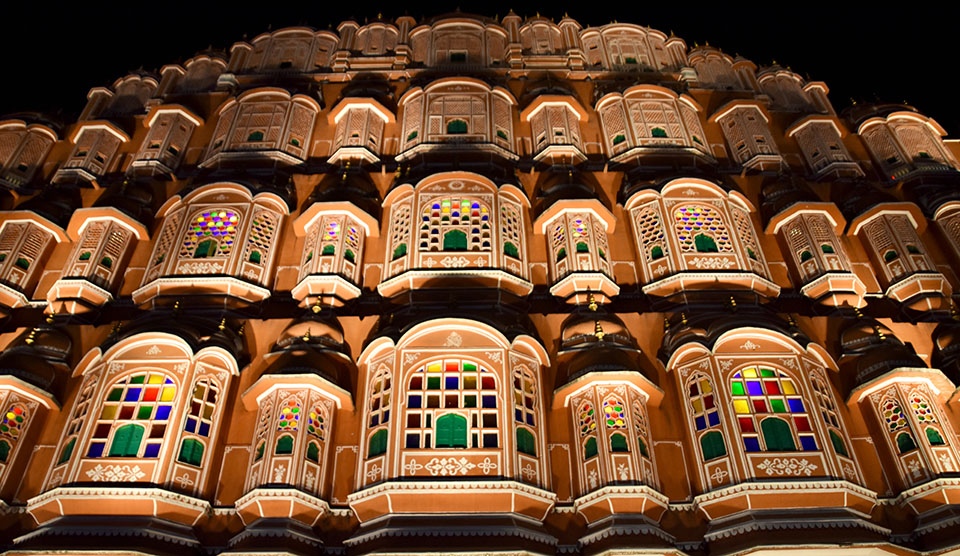
Places To Visit In Jaipur
If you are planning to travel to Jaipur then you have come to the right place. Jaipur is a bustling city with profound architecture and lip smacking street food. The old city of Jaipur is a walled centre with pink walls justifying its title as The Pink City. If you are planning to visit Jaipur, I highly recommend spending 3 full days in the city along with a tour guide to fit in all the attractions.
Visiting Jaipur had always been on my bucket list and mentioned below are places to visit while in Jaipur:
(click to enlarge photos)
Jantar Mantar – The Worlds Largest Sundial:
The Jantar Mantar is a collection of 19 astronomical instruments built by the Rajput king Sawai Jai Singh, the founder of Jaipur in 1734. It features the world’s largest sundial and is a UNESCO heritage site. This place is a must in every tourist’s itinerary. Located in the heart of the city, comprises of interesting stone structures that help calculate local time by interpreting the positions of the celestial bodies. The best time to visit Jantar Mantar is around noon as the sun is vertically above so that it is easy to practically measure time using these stone structures. Make sure to hire a local guide to understand the history behind Jantar mantar and how to sundial works. Entry fee to Jantar Mantar for Indians is ₹50 and for Foreigners is ₹200
City palace:
A walking distance from Jantar Mantar lies the City Palace. It now houses the Maharaja Sawai Man Singh II Museum, and continues to be the home of the Jaipur royal family. The facade is designed with detailed handwork that elegantly showcases a blend of Moghul and Rajput architectural styles. The city palace complex is divided into various sections namely:
- Mubarak Mahal – (Haveli famous for its structural charm)
- Chandra Mahal – (The residence of the Maharajas)
- Pritam Nivas Chowk – (Courtyard of the beloved)
- Diwan – I- Aam (hall of public audience)
- Diwan – I – khaas (hall of private audience)
- Maharani Palace (the Queen’s residence)
- Bhaggi Khana (Museum)
- Govind Dev-ji Temple
I spent around an hour and a half at the city palace as there were too many sights to see. If you plan to visit the City Palace, make sure you have a couple of hours to spare as you surely do not want to rush it!
Panna Meena Ka Kund (Stepwell):
Panna Meena ka Kund is a historic 16th century stepwell located in Jaipur at the foot of Amer Fort. It exhibits a symmetrical beauty and vibrant aesthetics. Beyond its role of water conservation, the Kund stands as a visual spectacle drawing attention of many tourists as they head to Amer Fort. Panna Meena Ka Kund is a 8 storied stepwell that is 200 feet deep and has 180 symmetrical steps.
Amer Fort:
One of the most famous and well preserved forts in the country and is a UNESCO World Heritage Site. The fort provides stunning views of the surrounding landscape. Majestic gates, huge courtyards & the Sheesh Mahal leaves tourists awestruck! Historically, the Amer Fort was abode to the Rajput Maharajas & their families for long. The fort is famous for its exquisite Hindu style elements but it also portrays an amalgamation of Hindu & Muslim styles at many places. Like the City Palace, Amer Fort too is divided into various sections:
- Suraj Pol: The main entrance to the Fort. The gate faces the east and thus the name Suraj (sun) Pol (gate).
- Ganesh Pol: The main entrance to the palace with beautiful carvings and paintings done using natural colours. Natural colours are the ones obtained from plants, vegetables, spices & stones.
- Diwan-I-Aam: The centre courtyard and common assembly place of the palace, traditionally where a king would meet his people to pay heed to their problems.
- Diwan-I-Khas: One of the most magnificent structures that contains a hall for the private audience. Traditionally this served as a place where the King would conduct his meetings.
- Sheesh mahal: The most famous and mesmerising attraction within the Amer Fort is the Sheesh Mahal also known as Mirror Palace. The walls and ceiling of this palace are adorned with thousands of tiny mirrors creating a breath taking reflective effect. It is said that only 2 candles are sufficient to enlighten the entire room even during the darkest nights due to infinite reflections created by thousands of glass pieces.
- Kesar Kyari Bagh: Amer fort is surrounded by well maintained gardens and the Kesar Kyari Bagh is a garden with a star shaped water tank. The reflection of the fort in the water adds to the beauty of the surroundings.
Your trip to Jaipur is incomplete if you haven’t visited the Amer Fort
Khazana Mahal:
Explore the treasures of Jaipur with the newly opened Khazana Mahal. The museum holds 2000 piece or real and rare precious stone, ancient statues, priceless paintings along with the world’s largest and most unique collection of gem stamps and postcards! An introductory audio-visual show will greet you at the very beginning of your tour to the Khazana Musesum.
Nahargarh Fort:
Another tourist hotspot in Jaipur representing a perfect blend of Indo-European architecture. The recent renovations over the last few years have enhanced the beauty of the fort. With grand gates, huge courtyards, and towers, the fort displays the influence of the Rajputana kingdom. Historically the fort also serves as a retreat for hunting trips of the royal family. You can’t find a better place for the kaleidoscopic views of the city.
Nahargarh biological park:
This park is home to variety of wildlife and it offers a safari experience where the visitors can explore the park in safari vehicles and also on foot. Nahargarh biological park allows visitors to explore animals in a semi-natural environment. This biological park houses houses animals such as Asiatic Lions, Bengal Tigers, White Tigers, Panthers, Hyenas, Wolves, Deer, Crocodiles, Sloth Bear, Himalayan Black Bear etc. Nahargarh sanctuary is also famous for bird watching and bird photography as over 250 species of birds can be found here.
Birla Mandir:
The Birla Mandir in Jaipur is not only a religious site but also a popular tourist attraction due to its architectural grandeur and peaceful ambience. The temple consists of 3 domes as a representation of 3 main religions originated from India. Each part of the architecture holds its importance. You will be amazed to find dutiful paintings and carvings inside the temple. Tourists often appreciate the blend of spirituality and artistry the temple offers.
Haha Mahal:
Hawa Mahal to Jaipur is what Eiffel Tower is to Paris, an iconic tourist attraction. Hawa Mahal is the post photographed tourist attractions in Jaipur as well as one of the top places for Instagram addicts. It follows a repetitive pattern of pavilions and windows that resembles a honey comb. The design allows cool air to pass through providing ventilation and living up to its name – Hawa Mahal. The cascade has 953 small windows designed with lattice work that creates a beautiful play of light and shadow. The palace is beautifully illuminated in the evening creating a mesmerising site enhancing its architectural features.
Jal Mahal:
Located in the middle of the Man Sagar lake in Jaipur, Jal Mahal is a stunning architectural edifice. Historically Jal Mahal was built as a pleasure place for the royal family and was used for recreational activities like duck hunting. While the palace itself is not open for visitors, boat rides offers breathtaking views of Jal Mahal and the surrounding landscape.
Choki Dhani:
A cultural village set-up located on the outskirts of Jaipur. A unique tourist destination that provides visitors with a glimpse of traditional Rajasthani village life and culture. Enjoy numerous attractions, games and activities that evoke a feeling of living the cultural heritage of Rajasthan. One of the hilights of Choki Dhani is the Rajasthani cuisine. Savour a wide range of Rajasthani dishes like dal bait churma, gatte ki sabzi, bajra ke roti, sarso ka saag and more. The dinning experience is often accompanied by live music and cultural performances.
